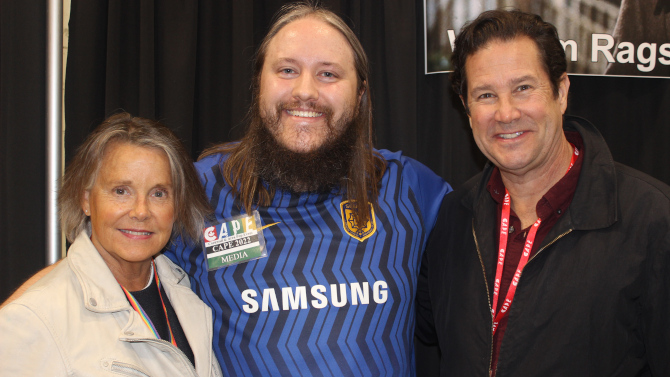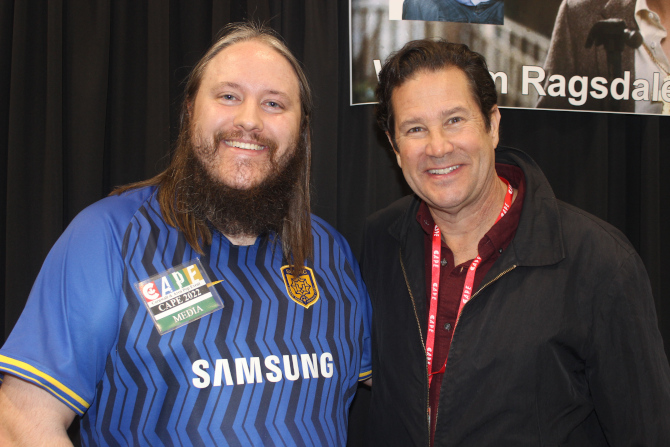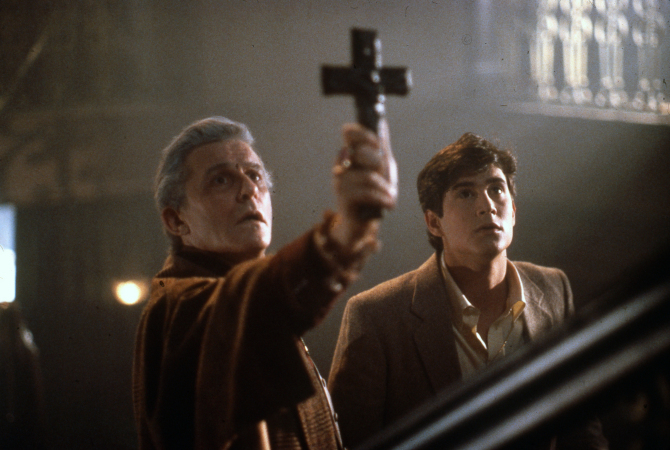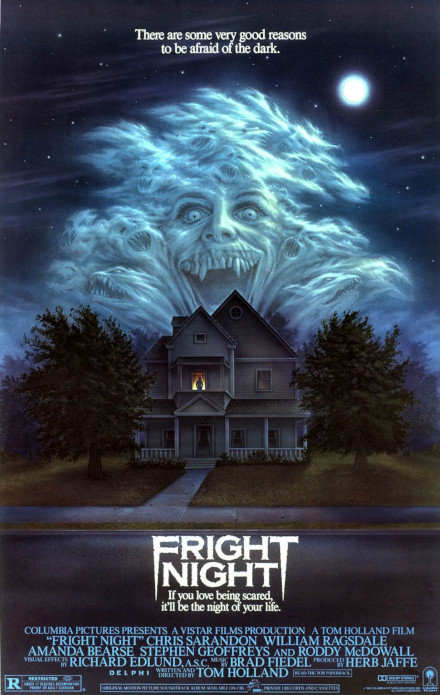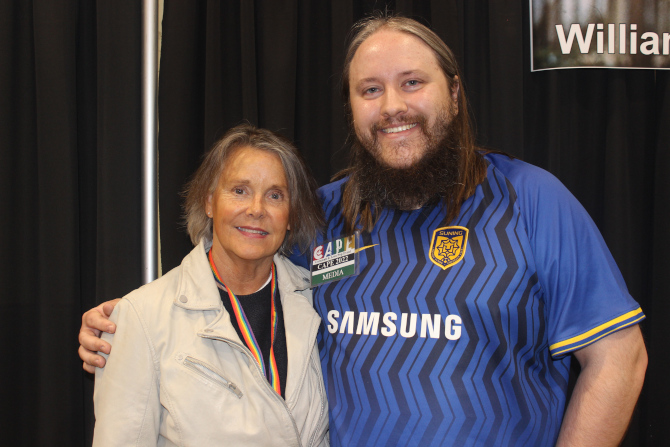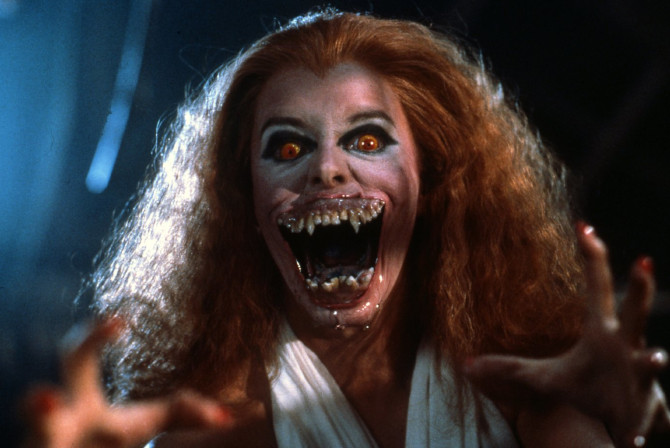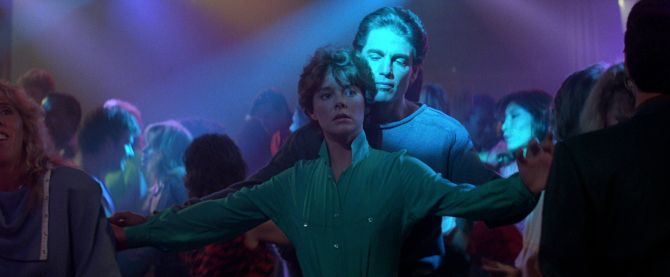As a special treat for Halloween, I’ve got two interviews for you. At this year’s CAPE (Cornwall & Area Pop Event), which was held on the weekend of April 23-24, 2022, I was fortunate enough to spend quite some time with William Ragsdale and Amanda Bearse, the two leading teens of the iconic 1985 horror cult classic Fright Night, written and directed by Tom Holland (no, not of Spider-Man fame – he wasn’t born yet). I hope you enjoy these inside looks into this quirky horror movie this Halloween, and keep an eye out for upcoming Star Pick interviews with both, which will reveal their favourite movies.
Nikolai Adams: So you’re reading this script, you’re a young actor, in your mind, are you thinking, ‘is this something that will stand the test of time – thirty five plus years on’, did you think it was something special or was it just a movie that you would hopefully get a part in and star in?
William Ragsdale: I thought the same thing that the people at Columbia Pictures did – that it would be a nice little summer movie diversion, you know, for the younger crowd, it would have a summer run and then it would go into the annals of time. Yeah, what it is now is much bigger than it was then. There was no way to predict that – there was no way to know, and you know, I grew up on Universal horror and Hammer horror films, Count Yorga and all that stuff. . . and the whole vampire genre, so it was a thrill for me, you know. You’re a kid going to the movies, that’s the kind of thing you place yourself in, so it was great to get that role right out of the gate. . . to be able to go into an effects driven genre picture, I was really thrilled by it.
NA: One of my favourite interview moments – I chatted with Lee Meriwether, who played Catwoman in the Batman movie, and obviously starred in Barnaby Jones. . . her favourite movie memory was as a seven year old going with her young brother and mother to see The Wolfman in the theatre – with Lon Chaney Jr. and remembering how afraid she was – it reminded me of your story. Anyways, not to be confused with the modern Tom Holland, what was it like working with Tom as a director?
WR: Tom was great. He was very sure about what he wanted. He had story boarded it out Ad infinitum – he knew exactly what each shot would be, exactly where it would be in the movie, and what you were seeing was great. I thought that must be what all directors do, they just nail it to the wall. Yeah, he did exactly what he wanted, but he had also been an actor in his early days, so he knew how to talk to actors, he knew about motivation of character, why people are doing what they are doing, and where they are coming from, and back story and all that. So that was great, coming fresh out of acting school. I was very familiar with that task work, and it fit nicely. He was great.
NA: What was it like working with Roddy McDowall [he played schlocky vampire actor Peter Vincent in the picture]? I’m a huge Planet of the Apes fan and I’d love to hear some stories. . .
WR: Roddy was terrible, awful, a horrible person. . . no [starts laughing]. He was great – generous, accessible, and fun, and really engaged in what we were doing. . . he made us feel really welcomed as equals and coworkers – which was really great and refreshing. He was terrific – he was a guy who loved, just loved movies, and you got that from him – he knew everybody, he knew the stories, he grew up in the studio system, and at that point the VCR system, so he knew it all. . . he was a really terrific guy.
NA: Now, there was some great makeup effects, practical effects in the film. Is there anything behind the scenes that you can share that would be cool for my readers where they’ll say, ‘wow, that’s how that is done’?
WR: Well, you know, yeah, as you say, it was all practical effects. There was no CGI at that point. So, yeah, you had a lot of puppets, hydraulic hoses, you know – so that was really cool to see that and how stuff was concealed. There was a point where I stab the vampire through the hand with a pencil and he sort of flips it back and forth, so you see the full effect. But then he pulls it out on one side, and it’s gone on the other. So that’s kind of like magic, you know. . . like a magic trick. They just used filament wire and jerked the thing off his hand when he pulled it out, but you really can’t tell. And all of those effects are like that. It was really cool.
NA: I’m curious, do you remember the first time you saw the iconic poster for Fright Night, and what was your thought?
WR: Well, I saw the billboard on Sunset Blvd. before I saw the poster. So, yeah, it was overwhelming. It was amazing – it was right on Sunset and Laurel Canyon. Amanda [Bearse] and I drove by as we were going out to get sushi, and then we went over to Sunset to have a look at it, and it was like the Grand Canyon for us. . . we just sat there for a few minutes staring at it, taking pictures and stuff. Yeah, I thought it was brilliant.
NA: They don’t make posters like that anymore.
WR: Yeah. And that effect. . . I don’t know if she [Bearse – who I had interviewed earlier on in the day] told you about that smile – it was kind of last minute, so for that to end up on the actual poster, that was really cool.
NA: I truly appreciate all of this. Thank you.
WR: It was my pleasure. Thanks for asking some great questions.
* * *
Nikolai Adams: Could you please tell me some stories about icon Roddy McDowall, as I’d love to hear about what it was like to work with him?
Amanda Bearse: Roddy was truly a lovely man. He was a true gentleman. One of the things I was struck by was his humility. And here he’s playing a character in this funny little horror movie which was both funny and horrific, and he’s playing this sort of unassuming B horror actor type of thing, and he had a relationship to that type of character personally that he didn’t hesitate to share. He really had a personal understanding. Now, Roddy knew everyone in Hollywood, because he had been there his whole life, but again, it was his humility and grace that I was so struck by. Both he and Chris Sarandon [who played vampire Jerry Dandrige] treated us, these little actors, as equals. . . and that too was extraordinary. I knew that, even though this was one of my first major roles, especially in film, that this was special and I was just so amazed that they were true gentlemen.
NA: That’s wonderful to hear. Now what about Tom Holland’s directing style?
AB: Tom was incredibly passionate about this project. You could tell that this was his love project. This was significant for him – I think it reached him at a very young age, his love and interest in this folklore of the vampire. And he was a true fan. . . and out of that with his gift as a writer. . . he was an actor as well, so he wrote dialogue very well. . . came this narrative, this story from the heart. I think that’s what makes Fright Night exceptional. . . not just the kitschiness of the 80s, right, and combining that with the humour and the horror. . . the characters were just very human themselves and dimensional. So it wasn’t written as a funny script, right. . . the humour comes out of the humanity and the relationships in these characters that I think is a little unexpected, especially in that era, for a horror film, because usually it is the horror that is the star.
NA: And from what I hear, he is still really passionate about it today.
AB: Absolutely. It really came from his heart.
NA: Now, the other thing that comes to mind with that are the amazing effects that were done to make it as special as it is. Could you provide me with any cool behind the scenes stories?
AB: Well, not so cool, we were guinea pigs you know.
NA: [laughing] I guess so, yeah.
AB: This is when practical effects, which is having a resurgence right now, because CGI, there’s something about the computer generated that takes you out of the story, and these were the specialists, those at the top of their game, competing with one another. So, the human beings who were acting in these films were truly the guinea pigs, and I had three sets of contact lenses – this is a story I’ve told at convention panels before, and I never wore lenses before, but they were painted as I went through my transition as a vampire and there was only a pinhole of light that I could see through. Well, they put in the last pair and they put them in right before the camera rolls, then take them out immediately. . . but as soon as these went in, I could tell there was something going on. And I didn’t want to squeak and squeal. . . I didn’t want to be that person going, ‘hold on, hold on’, but I had to. It turns out when they took them out, they had forgotten to sand the back of the lens so that paint was literally scratching my eyes. So I’m kinda glad I squeaked the wheel. And my time in the makeup chair for that big horrific mouth, which was added on at the last minute. . . Tom thought he needed one more moment that he didn’t have scripted, and he came up with that, and it’s a marvelous moment because the audience sees before the lead Charley sees, and it’s that element of anticipation that is so great. So that was turned around in about forty-eight hours, that whole concept – and it really is a finishing touch, right!
NA: Oh yeah, for sure.
AB: And that took about six hours in the chair, but I didn’t have to do it more than a couple of times. We had the most gifted, talented, insane special effects makeup crew and they were wild men, they really were. But again, it’s the fun, it’s the joy factor that can infuse a project and jump off the screen and I think that’s what happened with Fright Night. . . and it wasn’t an unsuccessful picture, but it was a horror movie back when horror movies weren’t as regarded as they are now, but the fact that it has had the longevity that it has had, comes from the passion and the joy factor that we were all having making it.
NA: And I think critics have gained a newfound respect for what happened starting in the mid seventies with the buildup of the slasher genre, but also those films like Fright Night that tried to do something different and bucked the trend, so to speak.
AB: Tom was adamant about not making fun of the genre. That was part of what fueled him, the parodies of the genre that were disrespectful in his mind. And Fright Night did kind of launch this resurgence with Lost Boys coming, then decades later with the Twilight series and True Blood and The Vampire Diaries and all that. . .
NA: And there is something very classical about it, right, you can see that there is a little bit of a lineage there back to the old Universal films with Dracula and The Invisible Man, because there was some comedy in those as well.
AB: Absolutely. Well that’s his fanboy. . . that’s Tom Holland’s fanboy.
NA: And you can pick that up.
AB: It’s infused, you know, and I’m a firm believer, as I’ve worked behind the camera for many, many years, that if it’s not on the written page, if it’s not in the script, no matter how many bells and whistles and special effects you apply to it, it’s not going to hold it. But if you’ve got great storytelling, and that’s what Fright Night had, it will succeed and thrive.
NA: I really appreciate this. Thank you so much.
AB: It was my pleasure. What a nice conversation I’ve had with you. Both here and before. . . thanks.
NA: Yeah, it was great.
AB: Thanks.

